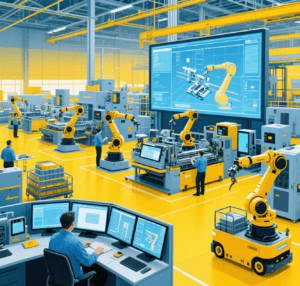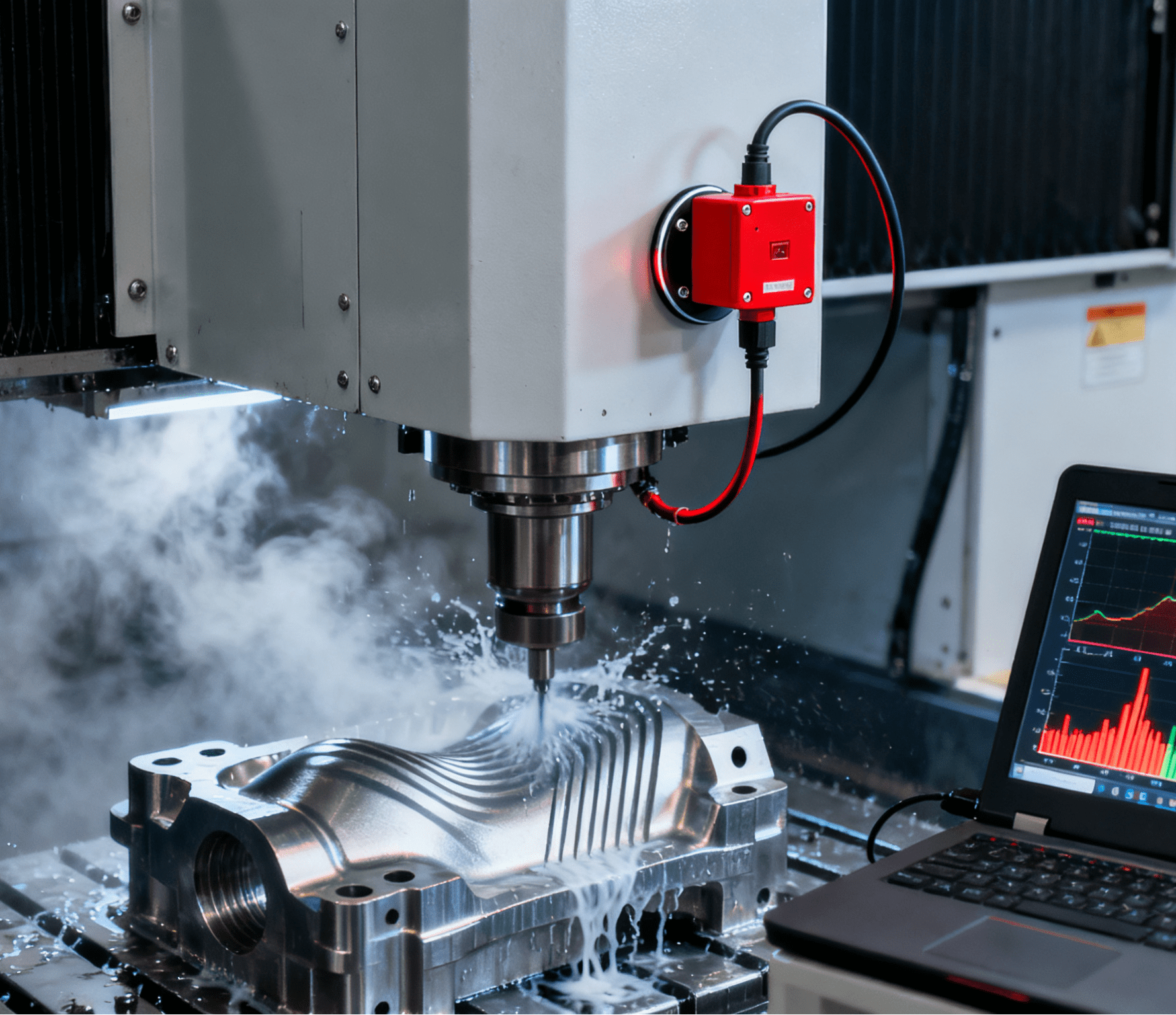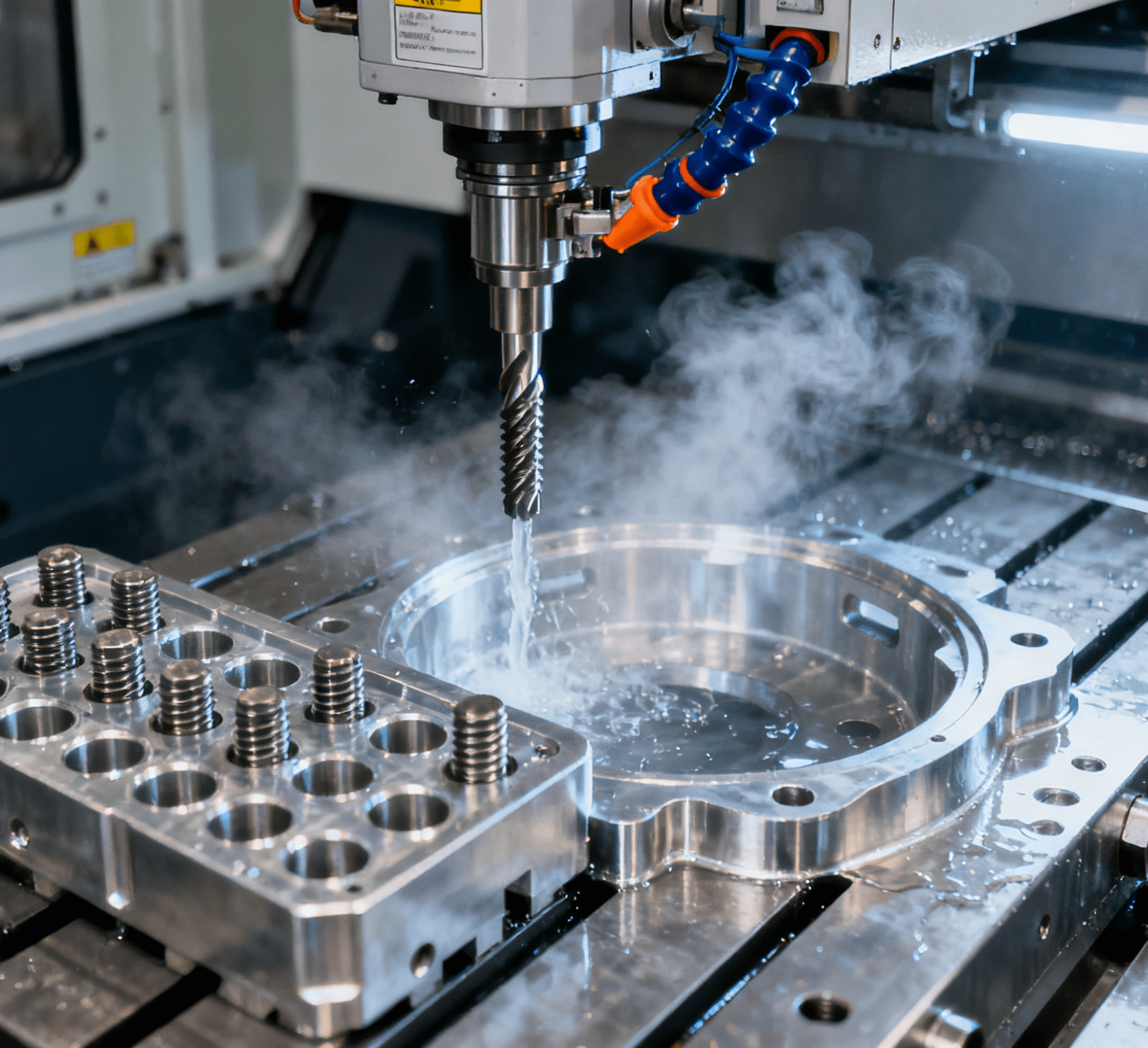Table of Contents
Toggle4-Axis Robotic Assembly System: Revolutionizing Efficiency in Smart Manufacturing Automation

In the era of Industry 4.0, traditional assembly systems struggle to keep pace with the demands of high-mix, low-volume production. Characterized by slow cycle times (15–30 seconds per part), limited flexibility, and high labor costs, these systems fail to address the agility required in modern manufacturing. The 4-Axis Robotic Assembly System emerges as a transformative solution, integrating high-speed SCARA robotics, AI-driven vision, and modular tooling to enable seamless automation across electronics, automotive, and medical device industries.
I. Core Technical Architecture: Speed Meets Precision
The system’s modular design synergizes robotic agility with intelligent control, comprising three interdependent subsystems:
1. High-Speed 4-Axis Robotic Manipulation
Powered by SCARA robots (e.g., Epson LS6, Yamaha YK-XG), the system delivers:
- Planar Motion Efficiency: Achieves assembly speeds of 150+ parts per minute with ±0.02mm repeatability, 3–5 times faster than traditional systems;
- Adaptive Payload Handling: Lightweight carbon fiber arms handle 5–10kg loads (including end-effectors), balancing speed with stability for delicate components;
- Compact Work Envelope: Horizontal reach up to 1,000mm, ideal for integration into tight production cells alongside conveyor networks.
2. Vision-Guided Component Alignment
A dual-camera vision setup ensures sub-millimeter accuracy:
- Overhead 2D Camera: 12MP+ resolution with telecentric lenses maps component positions, correcting ±10mm deviations using YOLOv8-based algorithms;
- 3D Laser Profiler: Scans part geometries to generate precise assembly trajectories, adapting to varying heights (2–50mm) and surface textures;
- Dynamic Tracking: Synchronizes with moving conveyors (speed up to 1.5m/s) for continuous assembly without line stoppage.
3. Modular Tooling & Gripping Solutions
End-effectors combine precision mechanics with smart sensing:
- Multi-Gripper Modules: Simultaneous handling of 4–8 components via vacuum cups, pneumatic grippers, or magnetic tools, reducing cycle time by 60%;
- Force-Torque Sensors: Monitor grip pressure (0.1–5N) in real-time, protecting fragile parts (e.g., glass substrates) from damage;
- Quick-Change Tooling: Swaps between gripper types in <10 seconds, supporting rapid adaptation to new product designs.
II. Industrial Applications: From Micro-Assembly to Mass Production
1. Electronics Manufacturing
- PCB Component Placement: SCARA robots place 01005-sized resistors (0.4mm×0.2mm) with ±0.05mm alignment, eliminating manual misplacements;
- Smartwatch Module Integration: Vacuum grippers handle 0.5mm LCD connectors, with ESD protection for sensitive electronics.
Case Study: A leading electronics OEM reduced assembly defects by 90% and increased throughput by 50% after deploying 30 systems, achieving 24/7 operation with minimal human intervention.
2. Automotive Component Assembly
- Engine Valve Spring Installation: Magnetic grippers position springs (5–50mm) with ±0.03mm vertical alignment, critical for engine performance;
- Dashboard Component Kitting: Robots assemble multi-part kits (switches, connectors) in predefined sequences, supporting just-in-time production.
3. Medical Device Fabrication
- Syringe Pump Assembly: 316L stainless steel grippers and ISO 8 cleanroom compatibility for medical-grade components;
- Microfluidic Chip Bonding: Vision-guided lamination of 50μm PDMS films with ±5μm accuracy for diagnostic devices.
III. Competitive Advantages Over Traditional Systems
| Performance Metric | Conventional Assembly | 4-Axis Robotic System |
| Cycle Time (parts/min) | 30–50 | 150–200 |
| Positioning Accuracy | ±0.5mm | ±0.02mm (X/Y) |
| Changeover Time | 15–30 min | <2 min (recipe-based) |
| Labor Requirement (per line) | 2–3 operators | 1 supervisor (remote) |
| Defect Rate | 0.5–1% | <0.05% |
IV. Future Innovations
AI-Driven Self-Optimization
- ML models analyze 100,000+ cycles to predict optimal assembly paths, reducing robot travel distance by 25%.
5G-Enabled Edge Computing
- Real-time data streaming allows predictive maintenance, reducing unplanned downtime by 60%.
Digital Twin Integration
- Virtual commissioning via digital twins shortens new line setup time from weeks to days.
Conclusion
The 4-Axis Robotic Automated Assembly Line represents a paradigm shift in manufacturing efficiency, combining speed, precision, and flexibility to address the challenges of Industry 4.0. By eliminating manual bottlenecks and enabling data-driven optimization, it becomes a strategic asset in smart factory ecosystems. As technology evolves, these systems will integrate deeper with AI, 5G, and digital twin technologies, driving the industry toward fully autonomous, lights-out production.
#4-Axis Robotic Assembly System #SCARA Robot Automation # Vision-Guided Assembly Technology




















